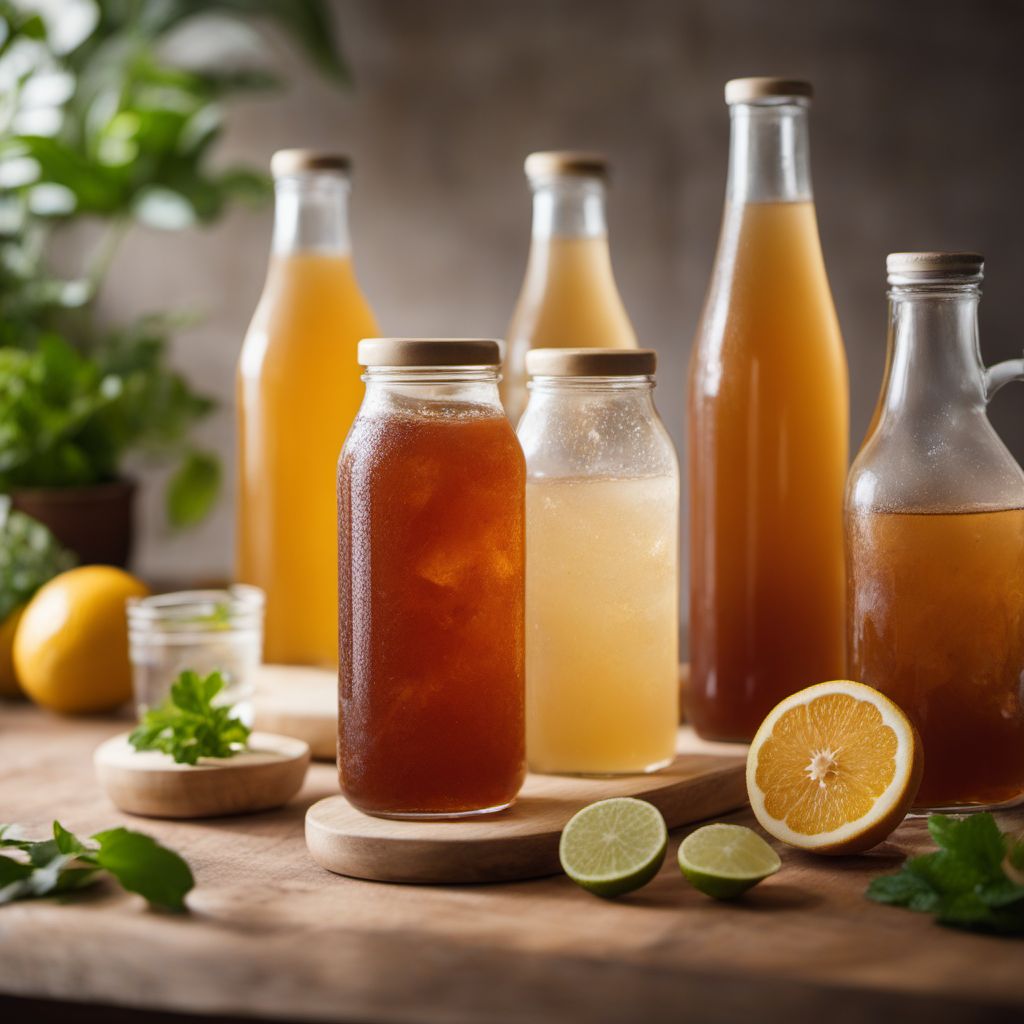
Ingredient
Fermented functional drinks (including fermented infusions)
The Power of Fermentation: Unlocking the Health Benefits of Functional Drinks
Fermented functional drinks are made by fermenting various ingredients, such as fruits, vegetables, herbs, or tea, with the help of beneficial bacteria or yeast. This fermentation process not only enhances the taste and aroma of the drinks but also increases their nutritional value. The result is a range of beverages that are not only delicious but also offer potential health benefits, such as improved digestion, boosted immune system, and increased nutrient absorption. These drinks can vary in texture, from smooth and creamy to effervescent and fizzy, and their appearance can range from clear to cloudy, depending on the ingredients used.
Origins and history
The practice of fermenting beverages dates back thousands of years and can be traced to various cultures around the world. Fermented drinks have been an integral part of traditional diets in many regions, including Asia, Europe, and Africa. For example, kombucha, a fermented tea, originated in China over 2,000 years ago and has since gained popularity worldwide. Similarly, kefir, a fermented milk drink, has its roots in the Caucasus region and has been consumed for centuries. The historical significance of fermented functional drinks lies in their ability to preserve food and enhance its nutritional value, making them an essential part of traditional cuisines.
Nutritional information
Fermented functional drinks are rich in probiotics, which are beneficial bacteria that support gut health and digestion. They also contain vitamins, minerals, and antioxidants, depending on the ingredients used. These drinks are typically low in calories and can be a good source of hydration.
Allergens
Fermented functional drinks may contain allergens such as dairy (in the case of kefir), gluten (if grains are used), or specific fruits or vegetables that individuals may be allergic to. It is important to check the ingredient list or consult with the manufacturer if you have any known allergies.
How to select
When selecting fermented functional drinks, look for products that are made with high-quality ingredients and have a clear and transparent label. Check for the presence of live cultures or probiotics, as these are indicators of a well-fermented drink. Additionally, opt for products that are stored in refrigerated sections to ensure freshness and potency.
Storage recommendations
Fermented functional drinks are best stored in the refrigerator to maintain their freshness and quality. The cold temperature helps slow down the fermentation process and extends the shelf life of the drinks. It is important to keep them tightly sealed to prevent exposure to air, which can affect the taste and texture.
How to produce
Amateur enthusiasts can produce fermented functional drinks at home by following specific recipes and fermentation techniques. It involves combining the desired ingredients, such as fruits, herbs, or tea, with a starter culture or a SCOBY (Symbiotic Culture of Bacteria and Yeast) and allowing the mixture to ferment for a specific period. The process may vary depending on the type of drink being made, but it generally requires a clean and sterile environment to prevent contamination.
Preparation tips
Fermented functional drinks can be enjoyed as is, chilled, or used as a base for various beverages. They can be incorporated into smoothies, cocktails, or even used as a marinade for meats or vegetables. To enhance the flavor, consider adding fresh fruits, herbs, or a splash of citrus juice. It is important to note that the carbonation in some fermented drinks can build up pressure, so open them slowly and with caution.
Culinary uses
Fermented functional drinks can be used in a variety of culinary applications. They can be enjoyed as a refreshing beverage on their own, used as a base for smoothies or cocktails, or incorporated into salad dressings, marinades, or sauces to add a tangy and complex flavor. They can also be used in baking to add moisture and a subtle tang to cakes, bread, or muffins.
Availability
Fermented functional drinks are commonly available in health food stores, specialty grocery stores, and online retailers. They can also be found in some supermarkets or farmers markets, depending on the region.
